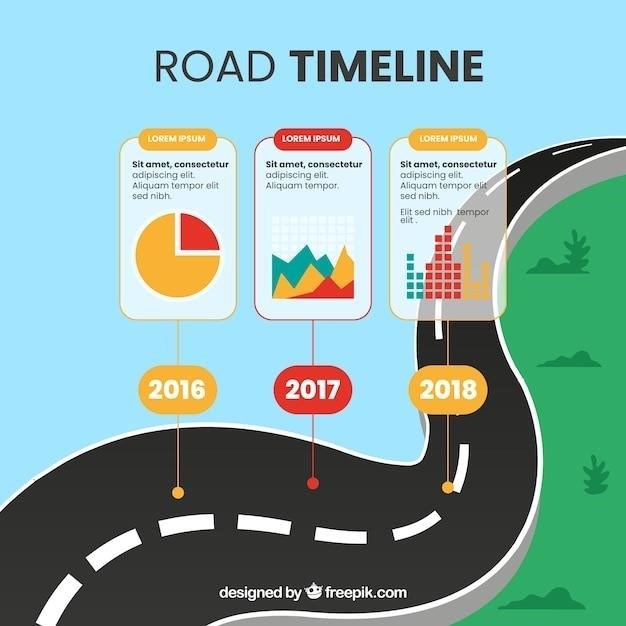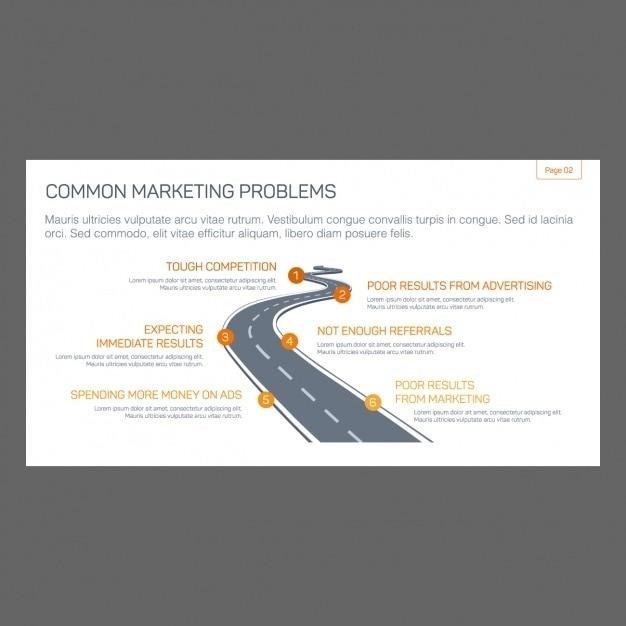Guide to Maintaining Roadworthiness in 2023
This comprehensive guide provides valuable insights into the essential aspects of maintaining roadworthiness for your vehicle in 2023. From understanding the importance of roadworthiness to adhering to legal requirements and utilizing helpful tips for upkeep, this guide equips you with the knowledge necessary to ensure a safe and reliable driving experience.
Introduction
In today’s fast-paced world, ensuring the roadworthiness of your vehicle is paramount. Roadworthiness encompasses the overall condition and safety of your vehicle, ensuring it meets specific standards for safe operation on public roads. This is not merely a matter of personal responsibility but a crucial factor in safeguarding yourself, other road users, and pedestrians. The concept of roadworthiness has evolved significantly, incorporating not only mechanical aspects but also environmental considerations, particularly in relation to emissions. This comprehensive guide delves into the multifaceted nature of roadworthiness, exploring its importance, key components, legal requirements, and practical tips to help you maintain a safe and reliable vehicle in 2023.

Importance of Roadworthiness
Roadworthiness goes beyond mere functionality; it’s a crucial aspect of responsible vehicle ownership that directly impacts safety, legal compliance, and environmental sustainability. Maintaining a roadworthy vehicle significantly reduces the risk of accidents, ensuring the safety of both the driver and passengers, as well as other road users. Furthermore, it guarantees compliance with legal requirements, preventing fines and potential legal repercussions. In an era of heightened environmental awareness, roadworthiness also contributes to reducing emissions, promoting clean air and a healthier planet. A roadworthy vehicle is not only a testament to responsible driving but also a reflection of commitment to the well-being of yourself, others, and the environment.
Key Components of Roadworthiness
A roadworthy vehicle is a culmination of several critical components working in harmony to ensure safe and reliable operation. These components encompass various aspects of the vehicle, from its physical structure to its mechanical systems. A thorough understanding of these key components is essential for maintaining roadworthiness and ensuring a safe driving experience. Regular inspections, maintenance, and awareness of warning signs are crucial for identifying and addressing potential issues before they escalate into serious problems. By prioritizing these key components, drivers can contribute to a safer and more sustainable transportation system for everyone.
Vehicle Inspections
Vehicle inspections are a crucial part of maintaining roadworthiness. They serve as a comprehensive assessment of a vehicle’s condition, ensuring it meets established safety standards. Inspections are conducted by trained professionals who meticulously examine various components, including brakes, tires, lights, and emissions systems. These inspections help identify potential issues that could compromise safety and ensure timely repairs are made. In many jurisdictions, regular vehicle inspections are mandated by law, while in others, they are strongly recommended for preventative maintenance; By adhering to recommended inspection schedules, drivers can proactively identify and address potential safety hazards, promoting a safer driving experience for themselves and others on the road.
Brakes and Tires
Brakes and tires are fundamental components of a vehicle’s safety system, directly influencing its ability to stop and maintain control. Regular maintenance is crucial for ensuring optimal performance. Brake pads and rotors should be inspected regularly for wear and tear, with replacements conducted as needed to maintain braking efficiency. Tire pressure should be checked frequently, ensuring it aligns with the manufacturer’s recommendations to prevent uneven wear and tire failure. Additionally, tires should be inspected for signs of damage, such as cuts, punctures, or excessive tread wear. Maintaining proper tire inflation and condition is essential for safe handling, preventing blowouts, and maximizing fuel efficiency. By prioritizing the maintenance of brakes and tires, drivers can significantly enhance their vehicle’s safety and overall performance.
Lights and Signals
Functional lights and signals are critical for safe driving, ensuring clear communication with other road users. Regular inspection and maintenance of all lights, including headlights, taillights, brake lights, turn signals, and hazard lights, are essential. Ensure that all lights are properly aligned and emit a bright, clear beam. Check for any signs of damage, such as cracked lenses or burnt-out bulbs, and replace them promptly. The functionality of turn signals and hazard lights should be verified, ensuring they operate correctly and are visible to surrounding vehicles. Additionally, inspect the condition of reflectors, ensuring they are clean and reflective to enhance visibility. Maintaining a well-functioning lighting system maximizes road safety by improving visibility, especially during nighttime driving and adverse weather conditions.
Engine and Emissions
A properly functioning engine is crucial for roadworthiness, not only for performance but also for environmental responsibility. Regular maintenance, including oil changes, air filter replacement, and spark plug checks, helps ensure optimal engine health. Pay attention to unusual noises, excessive smoke, or a decrease in fuel efficiency, as these can indicate potential engine problems. Emissions testing is another vital aspect of roadworthiness, particularly for older vehicles. Regularly checking and maintaining the emissions system, including the catalytic converter and oxygen sensors, helps reduce harmful pollutants and ensure compliance with environmental regulations. Addressing engine issues promptly can prevent costly repairs and contribute to a cleaner environment. Remember that a well-maintained engine not only improves performance and fuel economy but also reduces emissions, making a positive impact on air quality.
Legal Requirements and Regulations
Roadworthiness regulations vary depending on your location, but generally, they are designed to ensure vehicles meet minimum safety standards for safe operation on public roads. In many countries, regular vehicle inspections are mandatory, often requiring a certificate of roadworthiness to prove compliance. These inspections typically cover key components, such as brakes, lights, tires, and emissions, to ensure they function correctly. Failing to meet these regulations can result in fines, vehicle impoundment, or even the suspension of your driver’s license. Staying informed about the specific legal requirements in your area is essential for responsible vehicle ownership. It’s also important to be aware of any changes to regulations, such as the introduction of new testing procedures or stricter emissions standards. By staying informed and adhering to these regulations, you contribute to a safer driving environment for yourself and other road users.
Benefits of Maintaining Roadworthiness
Beyond fulfilling legal requirements, maintaining roadworthiness offers numerous benefits that contribute to a safer, more enjoyable driving experience. Firstly, it significantly reduces the risk of accidents. Properly functioning brakes, tires, and lights ensure optimal vehicle control and visibility, minimizing the chances of collisions. Moreover, regular maintenance extends the lifespan of your vehicle. Addressing issues early prevents minor problems from escalating into major repairs, saving you money in the long run. A well-maintained vehicle also performs better, delivering improved fuel efficiency and reduced emissions, contributing to environmental sustainability. Furthermore, maintaining roadworthiness enhances peace of mind; Knowing your vehicle is in optimal condition allows you to travel with confidence, knowing you’re prepared for any situation. Ultimately, prioritizing roadworthiness is an investment in your safety, your vehicle’s longevity, and your overall driving experience.
Tips for Maintaining Roadworthiness
Maintaining your vehicle’s roadworthiness doesn’t have to be a daunting task. By incorporating these simple yet effective tips into your routine, you can ensure your vehicle remains safe and reliable⁚
- Regular Maintenance⁚ Adhere to the manufacturer’s recommended maintenance schedule, including oil changes, tire rotations, and fluid checks.
- Professional Inspections⁚ Schedule regular professional inspections, especially before long journeys or if you notice any unusual noises or behaviors.
- Awareness of Warning Signs⁚ Pay close attention to any warning lights or unusual sounds your vehicle might emit. Address these issues promptly to prevent them from worsening.
By consistently practicing these tips, you can significantly enhance your vehicle’s roadworthiness and ensure a safe and enjoyable driving experience.
Regular Maintenance
Regular maintenance is the cornerstone of maintaining roadworthiness. It involves adhering to the manufacturer’s recommended service schedule, which outlines specific intervals for various maintenance tasks. These tasks are designed to prevent potential issues and ensure optimal performance.
Some essential maintenance tasks include⁚
- Oil Changes⁚ Regular oil changes are crucial for lubricating engine parts and preventing wear and tear.
- Tire Rotations⁚ Rotating tires ensures even wear and extends their lifespan.
- Fluid Checks⁚ Checking and topping off fluids like brake fluid, coolant, and power steering fluid is essential for proper system function.
- Air Filter Replacement⁚ A clean air filter ensures proper airflow to the engine, improving performance and fuel efficiency;
By staying on top of these tasks, you can ensure your vehicle remains in good condition and minimize the risk of breakdowns or safety hazards.
Professional Inspections

While regular maintenance is essential, professional inspections are crucial for comprehensive assessment and identification of potential issues. These inspections are conducted by qualified technicians who utilize specialized equipment and expertise to evaluate various aspects of your vehicle.
Professional inspections typically involve⁚
- Visual Inspection⁚ A thorough visual examination of the vehicle’s exterior and interior, including body panels, lights, tires, and undercarriage.
- Mechanical Inspection⁚ Testing and evaluation of engine, brakes, steering, suspension, and other mechanical components.
- Emissions Testing⁚ Checking emissions levels to ensure they meet regulatory standards.
By having your vehicle inspected by a qualified professional, you can gain peace of mind knowing that it meets safety standards and address any potential issues before they escalate.
Awareness of Warning Signs
A key aspect of maintaining roadworthiness involves being attentive to warning signs that your vehicle may exhibit. These signs can be indicators of underlying problems that require attention. Early identification and addressing these issues can prevent more significant breakdowns and ensure a safer driving experience.
Common warning signs to be aware of include⁚
- Unusual Noises⁚ Grinding, squealing, or clunking sounds may indicate issues with brakes, engine, or suspension components.
- Dashboard Lights⁚ Check engine, ABS, or other warning lights on the dashboard should not be ignored. These lights often indicate a malfunctioning system.
- Fluid Leaks⁚ Fluid leaks under the vehicle, such as oil, coolant, or brake fluid, should be addressed promptly to prevent further damage.
- Vehicle Handling Changes⁚ Noticeable changes in steering, braking, or acceleration may indicate a need for inspection.
Being vigilant about these warning signs and addressing them promptly can contribute significantly to maintaining a safe and reliable vehicle.
Resources and Support
Maintaining roadworthiness doesn’t have to be a solitary endeavor. Numerous resources and support systems are available to assist you in ensuring your vehicle’s safety and compliance. These resources provide information, guidance, and even practical assistance to help you maintain a roadworthy vehicle.
- Vehicle Manufacturer’s Manual⁚ Your vehicle’s owner’s manual is a valuable resource for information on recommended maintenance schedules, fluid specifications, and other vital details.
- Local Garages and Mechanics⁚ Establish relationships with reputable garages and mechanics in your area. They can provide regular maintenance, diagnose issues, and offer expert advice on roadworthiness matters.
- Government Agencies⁚ Contact your local transportation authority or Department of Motor Vehicles for information on roadworthiness regulations, inspection requirements, and available resources in your region.
- Online Resources⁚ Numerous online resources provide information on vehicle maintenance, roadworthiness standards, and safety tips. Websites, forums, and articles offer valuable insights and practical guidance.
Utilizing these resources can enhance your knowledge of roadworthiness, provide support in maintaining your vehicle, and ensure a safe and enjoyable driving experience.
Maintaining roadworthiness is not merely a legal obligation; it’s a commitment to safety and responsible driving. By understanding the importance of roadworthiness, adhering to legal requirements, and following the tips outlined in this guide, you contribute to a safer driving environment for yourself and others. Regular maintenance, professional inspections, and awareness of warning signs are crucial aspects of maintaining a roadworthy vehicle. Remember that a roadworthy vehicle is not just about passing inspections; it’s about ensuring your vehicle is reliable, safe, and capable of performing its intended function.
By investing in regular maintenance and prioritizing roadworthiness, you not only contribute to a safer driving experience, but you also enhance the longevity and value of your vehicle. As you continue to drive, always prioritize safety and responsible driving practices, and make maintaining roadworthiness a cornerstone of your automotive care routine.
